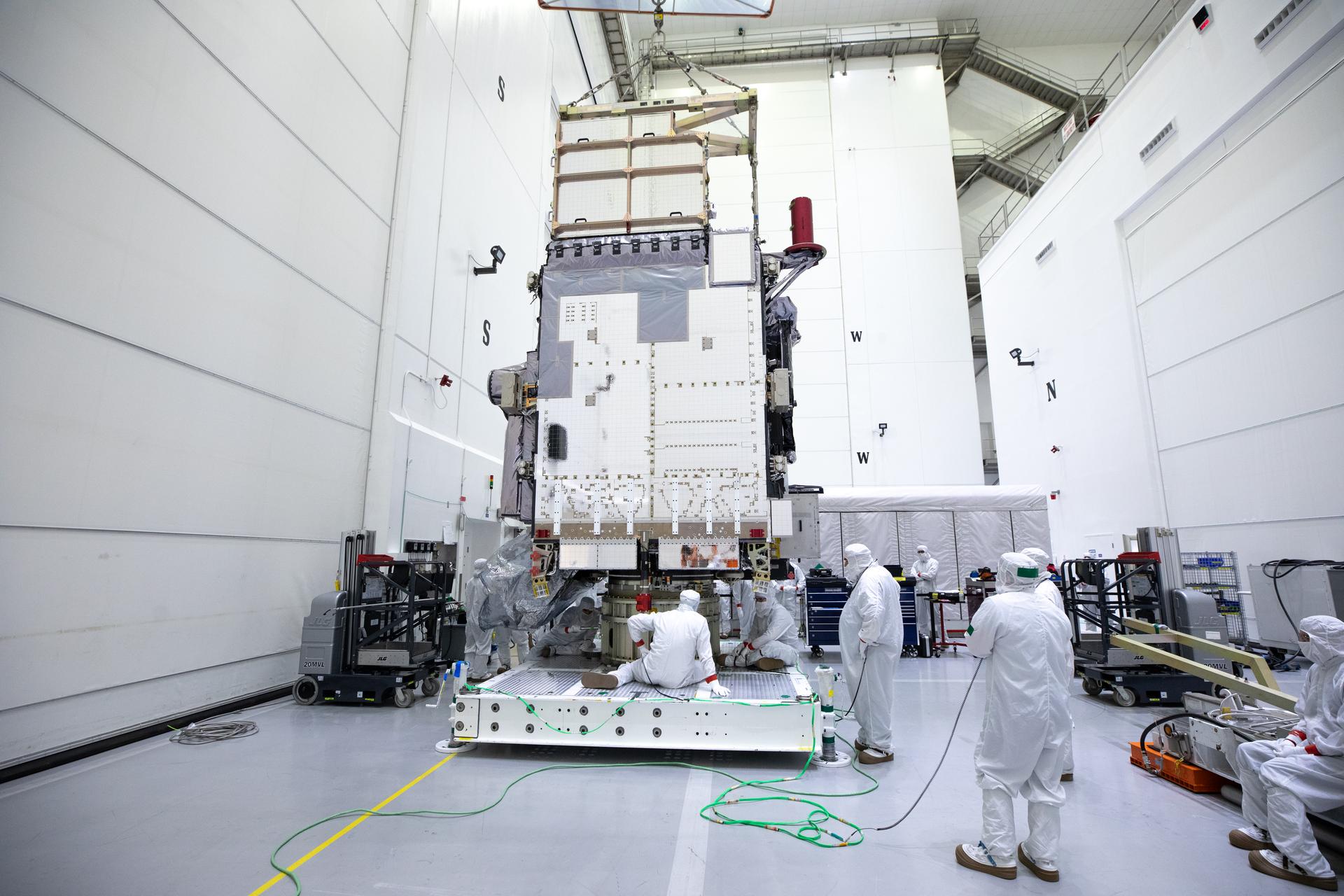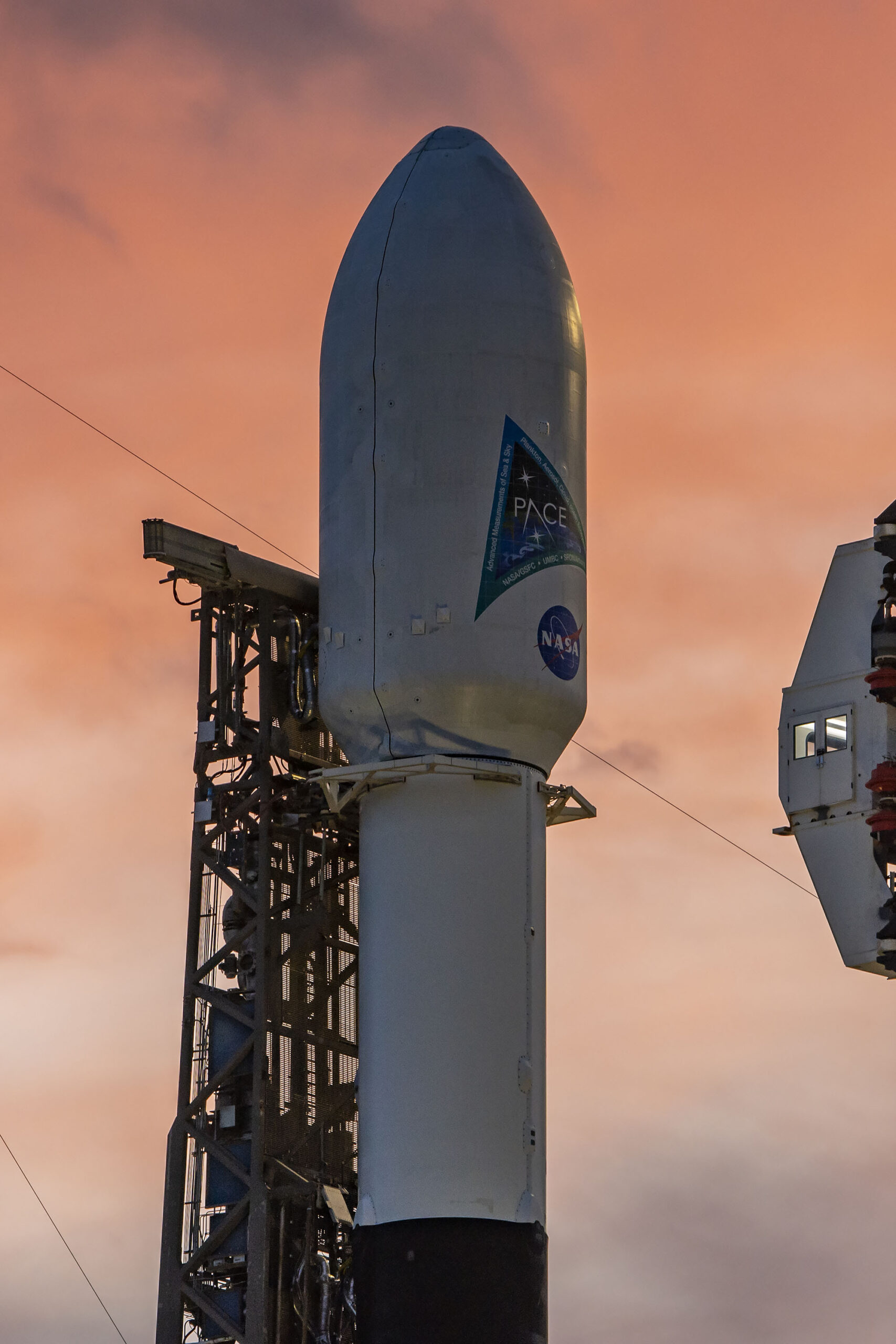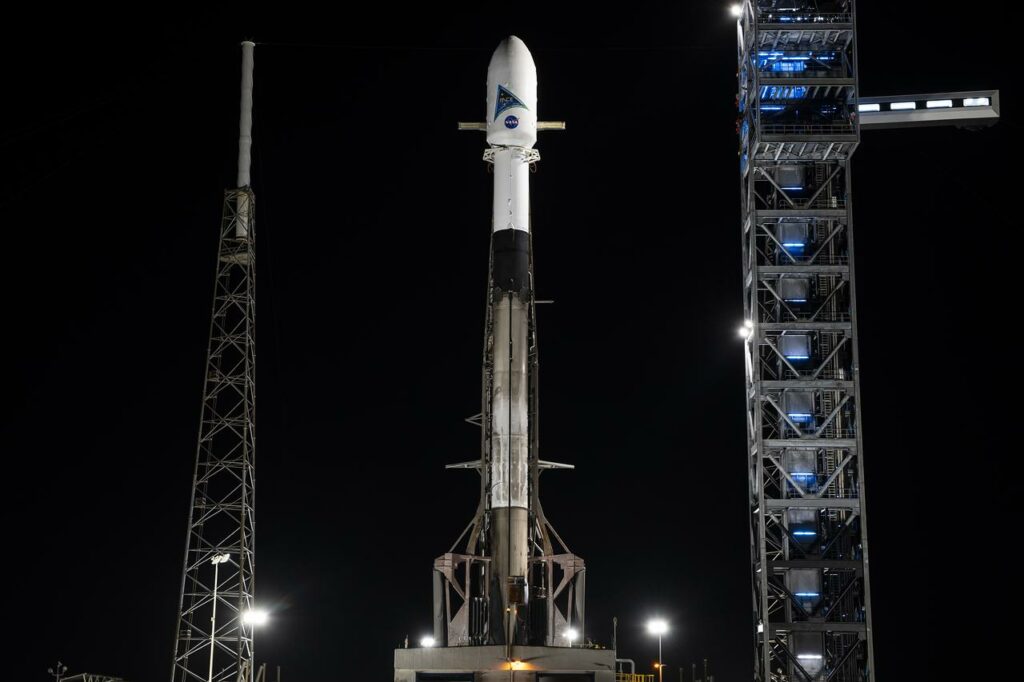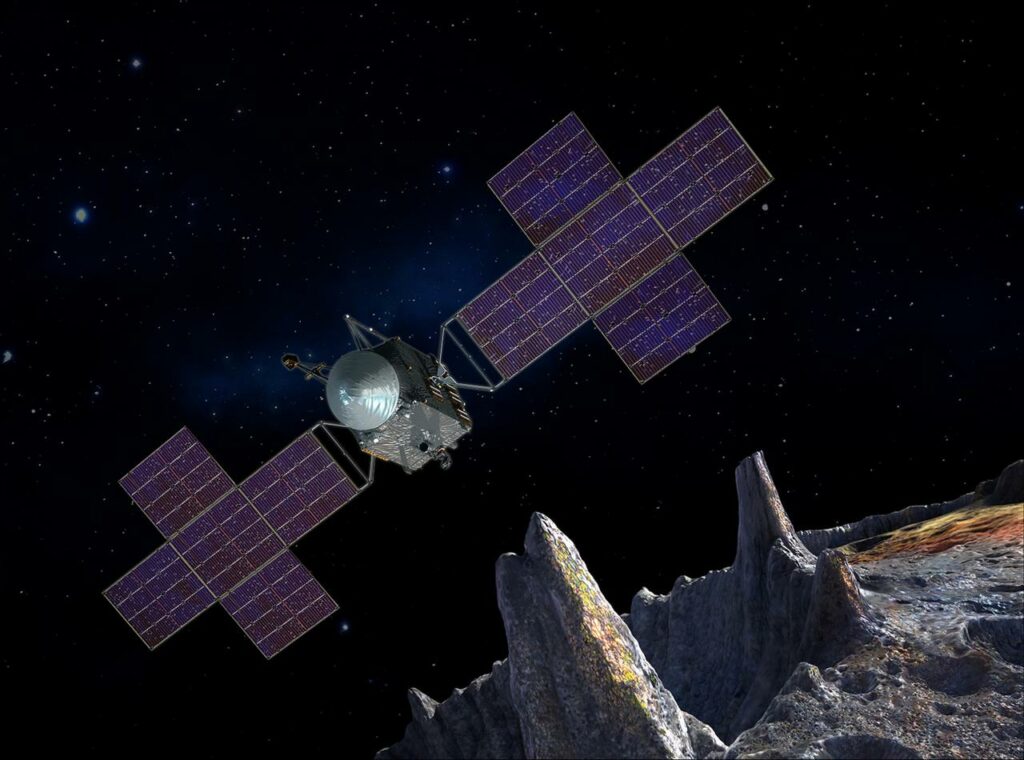NASA’s Kennedy Space Center in Florida remains closed as Hurricane Milton moves off the coast.
The safety of everyone impacted by the storm remains our top priority as the agency begins the assessment and recovery process from the hurricane.
Once the winds subsided to a safe level, the center’s Ride Out Team and engineering teams began initial checkouts to ensure bridges are safe and useable. Later, a larger assessment team will thoroughly check the entire center.
The agency’s Europa Clipper launch team will schedule an official launch date when teams from NASA and SpaceX are able to perform their assessments, and confirm its safe to launch. Teams are working to protect launch opportunities no earlier than Sunday, Oct. 13. Clipper has launch opportunities through Wednesday, Nov. 6.
NASA will provide more information on Clipper launch opportunities as it becomes available.
Author: Leejay Lockhart
NASA, SpaceX Secure Europa Clipper Ahead of Hurricane
NASA and SpaceX are standing down from the Thursday, Oct. 10, launch attempt of the agency’s Europa Clipper mission due to anticipated hurricane conditions in the area. Hurricane Milton is expected to move from the Gulf of Mexico this week moving east to the Space Coast. High winds and heavy rain are expected in the Cape Canaveral and Merritt Island regions on Florida’s east coast. Launch teams have secured NASA’s Europa Clipper spacecraft in SpaceX’s hangar at Launch Complex 39A at the agency’s Kennedy Space Center in Florida ahead of the severe weather, and the center began hurricane preparations Sunday.
“The safety of launch team personnel is our highest priority, and all precautions will be taken to protect the Europa Clipper spacecraft,” said Tim Dunn, senior launch director at NASA’s Launch Services Program.
On Oct. 4, workers transported NASA’s Europa Clipper spacecraft from the Payload Hazardous Servicing Facility at NASA’s Kennedy Space Center to the SpaceX Falcon Heavy rocket in the hangar as part of final launch preparations ahead of its journey to Jupiter’s icy moon. While Europa Clipper’s launch period opens Oct. 10, the window provides launch opportunities until Wednesday, Nov. 6.
Once the storm passes, recovery teams will assess the safety of the spaceport before personnel return to work. Then launch teams will assess the launch processing facilities for damage from the storm.
“Once we have the ‘all-clear’ followed by facility assessment and any recovery actions, we will determine the next launch opportunity for this NASA flagship mission,” said Dunn.
Launch of NOAA Weather Satellite Delayed

NASA and SpaceX are now targeting no earlier than May 2024 for the launch of the fourth and final satellite in NOAA’s Geostationary Operational Environmental Satellites (GOES) – R Series, GOES-U. The new date allows for additional testing and preparation of a new Falcon Heavy center core booster after a liquid oxygen leak was discovered during routine new booster testing.
NOAA oversees the GOES-R Series Program through an integrated NOAA-NASA office, managing the ground system, operating the satellites, and distributing their data to users worldwide. NASA’s Goddard Space Flight Center manages the acquisition of the spacecraft and instruments and also built the Magnetometer instrument for GOES-T and GOES-U. NASA’s Launch Services Program, based at Kennedy Space Center manages the launch services for the GOES missions. Lockheed Martin designs, builds, and tests the GOES-R series satellites. L3Harris Technologies provides the primary instrument, the Advanced Baseline Imager, along with the ground system, which includes the antenna system for data reception.
Weather Delays Launch of NASA’s PACE Mission

NASA and SpaceX are standing down from the Wednesday, Feb. 7, launch of the agency’s Plankton, Aerosol, Cloud, ocean Ecosystem (PACE) mission due to ground winds preventing prelaunch checkouts. The team is targeting liftoff at 1:33 a.m. EST Thursday, Feb. 8, on a SpaceX Falcon 9 rocket from Space Launch Complex 40 at Cape Canaveral Space Force Station in Florida.
The satellite and rocket remain healthy and ready for launch.
Live launch coverage will begin on NASA+ and NASA TV public channel at 12:45 a.m. EST on Feb. 8.
Continue checking the PACE blog for additional mission updates, or join the conversation on social media by following these accounts:
X: @NASA, @NASA_LSP, @NASAKennedy, @NASAGoddard
Facebook: NASA, NASA’s Launch Services Program, NASA’s Kennedy Space Center, NASA’s Goddard Space Flight Center
Instagram: @NASA, @NASAKennedy, @NASAGoddard
Weather Delays Launch of NASA’s Ocean, Atmosphere, Climate Mission

NASA and SpaceX are standing down from the Tuesday, Feb. 6 launch of the agency’s Plankton, Aerosol, Cloud, ocean Ecosystem (PACE) mission due to unfavorable weather conditions. NASA and SpaceX are now targeting launch at 1:33 a.m. EST Wednesday, Feb. 7, from Space Launch Complex 40 at Cape Canaveral Space Force Station in Florida.
Both the PACE satellite and the Falcon 9 rocket remain healthy.
Live launch coverage will begin on NASA+ and NASA TV public channel at 12:45 a.m. EST Wednesday, Feb.7.
Continue checking the PACE blog for additional mission updates, or join the conversation on social media by following these accounts:
X: @NASA, @NASA_LSP, @NASAKennedy, @NASAGoddard
Facebook: NASA, NASA’s Launch Services Program, NASA’s Kennedy Space Center, NASA’s Goddard Space Flight Center
Instagram: @NASA, @NASAKennedy, @NASAGoddard
NASA’s Psyche Mission Targeting Oct. 12 for Launch

NASA and SpaceX are now targeting Oct. 12 at 10:16 a.m. EDT for a Falcon Heavy launch of the Psyche mission from Launch Complex 39A at Kennedy Space Center. The change allows the NASA team to complete verifications of the parameters used to control the Psyche spacecraft’s nitrogen cold gas thrusters. These thrusters are used to point the vehicle in support of science, power, thermal and other demands, such as spacecraft orientation and momentum management. The parameters were recently adjusted in response to updated, warmer temperature predictions for these thrusters. Operating the thrusters within temperature limits is essential to ensure the long-term health of the units.
The verification activities involve rerunning simulations and fine-tuning adjustments as required to the flight parameters and procedures.
NASA, SpaceX, and Psyche mission managers met today, Sept. 28, to conduct a Flight Readiness Review (FRR) at Kennedy Space Center in Florida. During the FRR, teams provided an update on the mission status, and certified the readiness to initiate final launch preparation activities including a static fire test on Sept. 29.
Psyche has launch opportunities every day between Oct. 12 and Oct. 25.
TROPICS Launch Date Set
NASA and Rocket Lab are targeting no earlier than 1:30 a.m. EDT (5:30 p.m. NZST) Monday, May 22, for the launch of the agency’s TROPICS (Time-Resolved Observations of Precipitation structure and storm Intensity with a Constellation of Smallsats) mission, on an Electron rocket from Launch Complex 1 in Māhia, New Zealand.
The launch will place a pair of CubeSats in low Earth orbit, and they will join another pair of TROPICS satellites that made it to orbit last week after launching on an Electron rocket from New Zealand. Together the four satellites will orbit in two equally spaced orbital planes, which will distribute them for optimal coverage over the tropics. The orbiting TROPICS constellation of satellites will study the formation and development of tropical cyclones, known as hurricanes in the Atlantic and typhoons in the West Pacific, making observations of temperature, precipitation, water vapor, and cloud ice more often than what is possible with current weather satellites. They they will join the TROPICS Pathfinder satellite, in orbit since its launch in June of 2021.
Follow launch updates on NASA’s Small Satellite Missions blog and stay connected with the mission on social media.
Twitter: @NASA_LSP, @NASAEarth, @NASAGoddard, @NASA, @RocketLab
Facebook: NASA, NASA LSP, RocketLabUSA
Instagram: @NASA, @NASAEarth, @RocketLabUSA
Signal Acquired!
Team members successfully sent commands to the first CubeSat at 1:48 a.m. EDT, May 8. Subsequently, they established communications with the second CubeSat at 6:31 a.m. EDT. Read the NASA release here.
For imagery of this mission, please check here.
Follow launch updates on this blog and stay connected with the mission on social media.
Twitter: @NASA_LSP, @NASAEarth, @NASAKennedy, @NASA, @RocketLab
Facebook: NASA, NASA LSP, RocketLabUSA
Instagram: @NASA, @NASAEarth, @RocketLabUSA
Working Toward Signal Acquisition
Two TROPICS CubeSats successfully deployed from a Rocket Lab Electron rocket after launch.
The team is working toward signal acquisition from the pair of TROPICS CubeSats. NASA will continue to assess data from periodic pass opportunities. It is not unexpected for CubeSats to take some time to establish communications. We will provide confirmation when signal is acquired.
The second pair of TROPICS CubeSats is planned to launch aboard another Rocket Lab Electron rocket, named Coming To A Storm Near You, in about two weeks from Launch Complex 1 at Māhia, New Zealand.
Follow launch updates on this blog and stay connected with the mission on social media. This concludes our coverage of this launch.
Twitter: @NASA_LSP, @NASAEarth, @NASAKennedy, @NASA, @RocketLab
Facebook: NASA, NASA LSP, RocketLabUSA
Instagram: @NASA, @NASAEarth, @RocketLabUSA
Deployment Confirmed
Rocket Lab confirms Electron has successfully deployed the two TROPICS satellites to orbit.
